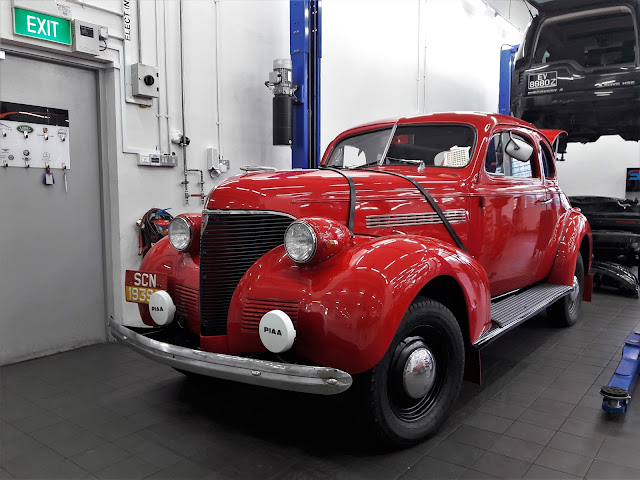Out of the many old Japanese cars that are on the road, I believe many people would recognise this particular one from "Initial D" even though they may not know what exactly it is. Known affectionately as the "Panda", it is desired by many across the world and I was similarly awestruck by this 1983 Toyota Corolla Trueno AE86, especially when it was my first time seeing it!
The AE86 was based off the E80 Corolla series and was made between 1983 to 1987. It was developed with the intention of producing a car that could perform well in racing. With that in mind, it featured a front-engine, rear-wheel drive layout [ie the engine at the front powers the wheels at the back primarily]. Two variants were made: Levin, (Middle English for "lightning") and Trueno (Spanish for "thunder"). The Levin had fixed headlights while the Trueno had pop-up headlights. A coupe and hatchback style were then produced from these 2 variants. The "6" represents the 4A-GE i4 engine, with a capacity of 1.6 litres/1587 cc--this is because an AE85 variant was also manufactured that had the 1.5 litre engine. As a result, it is also known as the hachi-roku ["eight-six" in Japanese].
This unit here is the GT-V trim level, which had less accessories compared to the top-grade GT-Apex trim such as the rear wiper and a stereo set. Weighing in at only 940 kg and a length of 4205 mm, it became a hot favourite among racers, especially in the then-novel niche of drifting, which is taking a car on a set of controlled slides through corners. The renowned drifter Keiichi Tsuchiya, otherwise known as the "Drift King", made drifting a popular genre of motorsports with his preferred AE86. In 1994, Initial D was released, first in manga form and from then on it captured the imaginations of many adolescents worldwide. In fact, prices for AE86s have been inflated so much that the difference is referred to as the "Takumi tax", after the tofu-delivering main character in the series.
This is one of the few vehicles that have entered pop culture and also easily recognizable even if you are not a car person, especially when Jay Chou acted in the film version. The last I heard of this particular car was that it was stripped down for parts unfortunately...
There are currently about 6 remaining in Singapore, with a mix of both Levins and Truenos. I believe they were originally sold here by the local dealer, and they have survived the merciless COE system unlike a few others. This is not just an ordinary Toyota, but a cult classic that still earns much adulation. Maybe you could look out for a flash of white and black--you may see one of them too!










